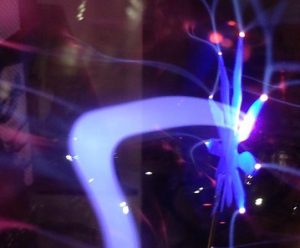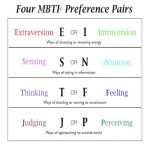Creeping Disruption Startups Need to Be Aware of Many Innovations in So Many Fields
Creeping Disruption: Market disruption is presented as if it is a big bang like digital photography ending film photography. But it’s much more like a gradual change—creeping disruption, rather than a big bang.
photography. But it’s much more like a gradual change—creeping disruption, rather than a big bang.
For instance, the creeping disruption of the electricity industry has a very important message for any new venture that is not really wide awake and noticing what is really happening in their sector. Will the startup be caught out by creeping disruption, even before the venture is off the ground?
Some electricity coops question whether they should change their governance and seek to become for-profit companies. Some generator giants that were heavily invested in nuclear are looking to different fuels. Coal-fired stations are less and less economic with alternative fuels like natural gas being cheaper, let alone environmental challenges and costs. These are the power generation stories that hit the news.
Ten Kinds of Creeping Disruption in the Electricity Industry
However, there are many who consider that the utilities we have known and loved are in a death spiral. A death spiral, but not sudden death. Creeping disruption is not one big innovation, but multiple smaller ones with a bigger and progressive impact. Here are ten reasons why creeping disruption is having a progressive impact in the electricity generation market:
- Smart storage and innovative batteries are already here—big ones and small ones;
- Cities and communities within them can opt out and go their own way on power, as Brooklyn Power Coop aims to do; Green Mountain Power (the Vermont electric utility) has an experiment to turning homes, neighborhoods and towns into virtual power plants, reducing the amount of energy drawn from the grid;
- The national grid, though seen in the past as a way to prevent local outages, may be surpassed by regional or smaller ones—and more local energy independence—microgrids;
- Renewable energy generation is becoming comparable and cheaper, as well as enabling distributed generation;
- Homeowners can become self-sufficient in energy production and storage;
- The so-called internet of energy—you can have a network of smart devices within your home, where you could, for example, send your excess power to your parents, or where algorithms and computers dramatically reduce distribution costs ;
- Micro generation where your power consumption reduces dramatically; think the solar watch;
- Kinetic energy: the energy an object has because of its motion could be captured and used as needed; this is already happening in the bicycle industry, with e-bikes;
- The impact of the electric car on energy demand: India, France, Norway and Britain have end dates for gas and diesel cars, for instance; all Volvos will be electric or hybrid in only two years from now;
- Building industry and zoning changes are impacting energy demands.
The sector of your startup may not seem to be shifting as dramatically as the electricity generation market, but do not be too complacent. Apart from anything else it may be that the merging of sectors, convergence rather than their disruption is what will impact your business.
Creeping Convergence
Quite apart from creeping disruption and the innovations about which so much is written, almost the reverse (creeping convergence) is surprising some people. Examples include solar roof tiles, as more and more surfaces are being exploited for solar energy. Now we see off-airport parking lots with shade/light/energy producing covers. The question becomes, ‘what can not be adapted to produced electric power?’
Photovoltaic fabrics immediately suggest all kinds of convergence, such as solar curtains. Power Textiles, a Scottish company is developing solar textiles—as opposed to heavy inflexible solar cells sandwiched between glass. They are looking to provide horticulture with a product which may be more efficient and beneficial than the current growing systems, such as the use of poly tunnels. Applications are many; since solar fabrics can be easily dismantled, rolled up and taken somewhere else, your imagination can run riot with ideas.
You don’t even have to limit yourself to solar fabrics, a team of researchers has developed a textile capable of harnessing energy from both sunlight and wind. The hybrid textiles are composed of photovoltaic and triboelectric nanogenerators—if you know what they are.
Creeping Disruption with Creeping Convergence
Creeping convergence can also be creeping disruptive. Since sneaker retailers get about 50% of the retail price of sneakers, effective online sales can allow the manufacturer a bigger slice of the consumer price (Nike aims at 30% of sales online by 2022). On top of that is the trend towards ‘athleisure’ sneakers instead of sneakers for specific sports and activities, which can significantly lower marketing costs (according to the BBC, “in 2015 Nike signed a lifetime endorsement deal with basketball superstar Lebron James, reported to be worth $1bn (£800m). But those big deals are becoming less important.”
Fleeter of foot, there are mew ventures entering the sneaker market from outside the sector, taking advantages of these developments. Allbirds, a sneaker startup and B Corporation, has developed a sneaker with an all-wool knitted upper, that avoids the need for expensive sewing; another style is also knitted, but in eucalyptus tree fiber. Those sneaker have eyelets that are bio-based and the laces are from recycled plastic bottles; the soles are from Sweetfoam™ sugarcane.
It is hard to unravel whether disruption or convergence is taking place here, because both are occurring concurrently. Added to which the move towards eco-friendly sneakers are coming from both big brands and sneaky startups. For instance, Adidas and Reebok are going for green, as well as Veja, the 2005 French startup making ecological and fair trade footwear in Brazil, an B Corp Baabuk, whose Swiss 2016 startup story you can see here; they started with slippers but now make sneakers, too.
Noticing Creeping Disruption
Sometimes creeping disruption is relatively easy to spot. The growing legalization of marijuana in the US has been obvious, but maybe the consequences for other industries has not been so glaring. Hemp, the plant from which pot comes, is very versatile and once processed can be used in many other sectors, including clothing and construction. An example of a good trend spotter and a former student of mine, Tom Rossmassler is building Hempstone in the building industry where he’s worked for many years.
Being a first class noticer is a critical skill fr any entrepreneur in this fast changing world of ours. After disruption has occurred in an industry, many people will see the change as ‘obvious’, but it’s tougher to spot the phenomenon ahead of time as it creeps up on us. Doing a periodic brainstorming session with supporters and colleagues can pay dividends. You can even include some mavericks in your own sector to elicit wild ideas!






